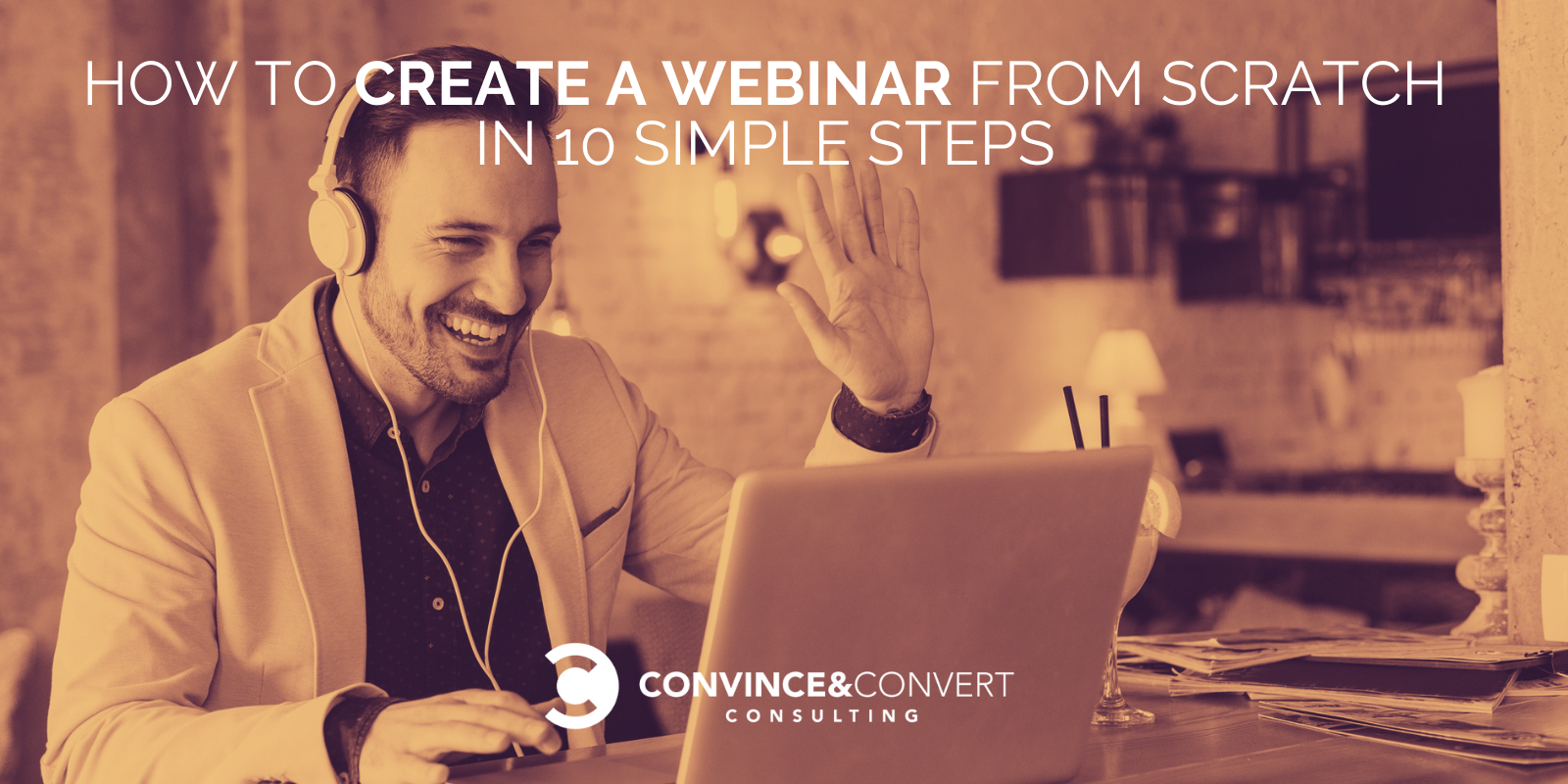
Over the past 12 years, our team at Convince & Convert has created, hosted and promoted hundreds (maybe even thousands) of webinars and virtual conferences. Done right, they are an incredible way to generate leads and connect with your audience.
In fact, a Content Marketing Institute study found that 58 percent of B2B marketers implement webinars in their content marketing strategy. This is no surprise, since webinars can be very engaging, and they’re not very expensive to create or distribute.
In my 12+ years of experience in B2B marketing and sales, no other type of content has been able to move the needle in the sales process as much a webinar can.
Since webinars are so important for B2B marketers today (and even some B2C marketers), we’ve put together the following tips to help you create a webinar from scratch.
1. Choose Your Team
A webinar usually has three prime players. The success of your session depends on them, and I recommend that you carefully consider your options when selecting the following:
- The Organizer: The organizer or the facilitator is the key individual responsible for developing content for the webinar. They are also responsible for finding a suitable speaker and promoting the event. They are in charge of registrations and communicating with the participants at the beginning and end of the webinar.
- The Presenter(s): The Presenters or the Subject Matter Experts should focus on developing and delivering the webinar presentation. They look after webinar programming and troubleshooting, event registration, and other details to help them deliver an engaging presentation.
- Assistant(s): Assistants help in answering queries that the Presenter and the Facilitator don’t have much time for. They help by responding to technical queries. (For example, “The audio and video are not in sync!” or “There is no sound!”) Assistant(s) are often required for webinars with a large audience.
2. Decide On the Webinar Format
The next step is to decide on the format of your webinar. I suggest you choose a format that will best relay your message while engaging your audience. You can consider the following four webinar formats:
- Single Speaker: As the name suggests, this involves a single speaker communicating with the attendees. The speaker will also demonstrate the contents of the webinar and answer all queries raised by the attendees. I recommend this type of webinar if you have a small audience.
- Interview Format: This involves a speaker acting as an interviewer and asking a set of predetermined questions to the Subject Matter Expert(s). This type of webinar can be very engaging, with the attendees watching the SMEs answer questions. It also encourages them to ask questions, making it interesting.
- Moderated Panel Discussion: Like a panel discussion, a panel webinar has several speakers who talk over a predetermined topic. A moderator will need to facilitate this type of webinar.
- Q&A: Similar to the interview format, this type of webinar also allows the speaker to answer questions, but this time, the questions directly come from the audience. I recommend that you collect the questions beforehand. This will ensure that you stay on schedule and vet the questions coming from the audience. Q&A segments are usually added at the end of all webinar formats.
3. Plan Visuals for Your Webinar and Get Your Presenters Camera-Ready
Being a web-based seminar, webinars largely rely on audio and visual materials to demonstrate their contents. Slides filled with text will not do the trick.
In fact, the best webinars should feel more similar to the face-to-face experience, you should require presenters to use their web cam while presenting.

Our very own Anna Hrach presents a webinar for higher ed marketers with her camera enabled.
This allows audience to see the speaker during the presentation, which adds another layer of information such as non-verbal cues, etc.
However, this requires each presenter to not only have a decent camera (ideally, better than their on-board laptop cam) as well as suitable lighting.
This isn’t necessarily a huge challenge, but is another wrinkle that presenters don’t have to contend with in a face-to-face event (and is another reason you need run-throughs).
In terms of slides, Including suggest you consider the following points when preparing visuals for your next webinar:
- Have an introductory slide with information like the time of commencement and points to be discussed in the webinar. But make it fun!
- After this, have a slide showcasing a synopsis of the topics that will be covered in the webinar.
- Include a slide of tools and websites that will be used in the process. I recommend that you use the tools and websites in real time during the webinar so that you can have a better impact on the audience.


